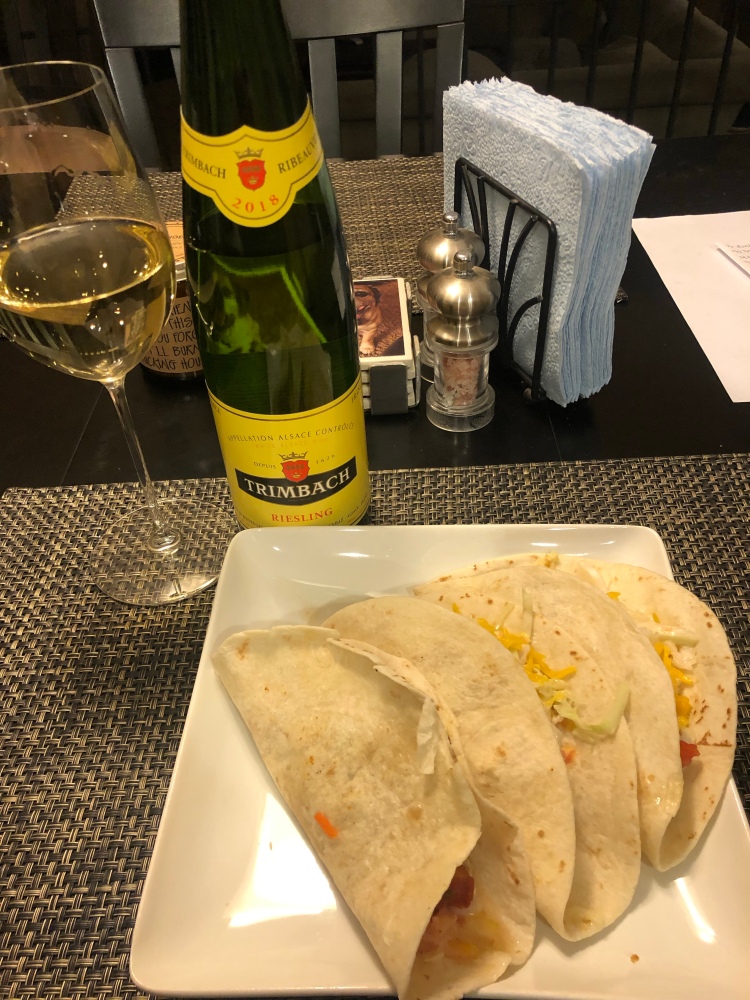
I selected Riesling from the Alsace region in France because it’s expression is unique compared to those from other regions and countries. As you may recall, back in July, we explored the world of German Rieslings, which vary widely in level of sweetness. Alsace is known for its pronounced minerality imparted on the wine from the granite-heavy soil. As a result of the Vosges Mountains blocking rain clouds coming from the west, the area is quite dry during the crucial summer growing months. The temperature usually tops out around 80℉ which is just warm enough to ripen the cold climate grapes that grow in the region. The ripening is assisted by the fact most vineyards are planted south facing, to maximize the summer sun. These cool temperatures also aid in maintaining a significant level of acidity in the grapes. While Germany has their Prädikatswein classifications, Alsace has Grand Cru (the region of Burgundy also has Grand Cru designations). The French wine appellation governing body (or the AOC), designated the very best parcels of land Grand Cru status. These parcels are extremely specific down to the individual vineyard. There are presently 51 vineyards granted Grand Cru status, accounting for 5% of the production in the region. Some of these plots of land have been known to produce superb wines for over 1000 years and command higher prices.
The bottle I selected for the week is from Trimbach, a winery with a significant international footprint. Maison Trimbach started growing grapes 12 generations ago, in 1626 in the town of Riquewihr. The estate relocated after WWI near the center of the historic village of Ribeauvillé, the same town where my Alsatian Gewurztraminer came from back in April. The Trimbach holdings stretch into 6 different nearby villages and export about 85% of the wines they produce. They also have a negociant business that sells significant amounts of their sustainably grown fruit to other wine producers, so you might see their name on bottles from other wineries.

I decided to pair a 2018 Trimbach Riesling with grilled fish tacos this week. The wine is a pale straw yellow with watery legs that took their time sliding down the sides of the goblet. The wine smells of petroleum, honeysuckle, pineapple, candied fruit, and candied citrus. The wine is medium bodied, dry, highly acidic with significant minerality reminiscent of graphite, notes of lemon pith, honeysuckle, petroleum, and lime. The acidic components in the wine complemented the fresh salsa and squeeze of lime I topped each taco with. The grilled cod had a fresh minerality to it that was perfect with the minerality of the wine. The tacos were topped with a crema and slaw mixture. These both had citrus notes that balanced the corresponding element in the wine. This was a lovely, light late summer dinner that I would definitely recommend!
-TheLooseTannin